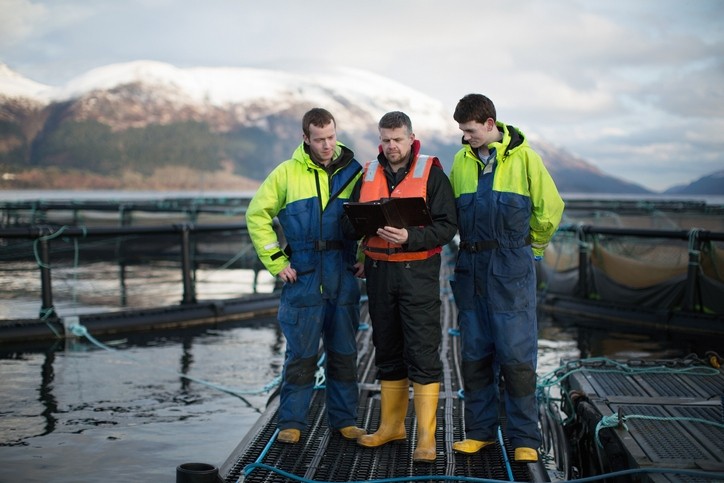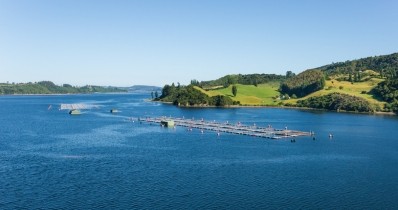Skretting on sustainability goals: ‘We’re fully aware that we need to keep learning and do more’

“This is now about how great we are; we're also not saying that everything we do is perfect or that we have solved all the challenges we face as a company and as an industry; because that's simply not the case. Instead, we're providing details of how we’re working to address our dilemmas; we are highlighting the opportunities that we intend to embrace; and we're showing where there's clear room for improvement,” said Therese Log Bergjord, CEO of Skretting.
She said with the rapidly changing developments in the industry and in the wider world, with COVID-19 still hanging around, coupled with logistics issues, rising inflation and the Ukraine war, alongside demands from consumers with regards to knowing more about the food they’re eating, the company is "fully aware" that it needs to keep learning and do more around sustainability metrics.
In addition, the fish feed manufacturer is emphasizing the power of collaboration in relation to addressing sustainability goals. It stressed that, in order to drive transformational changes in the industry, engagement with customers, suppliers, NGOs, and certification bodies, is critical.
“We cannot do everything on our own, we need to find solutions together with key stakeholders, and we need to be transparent about the hurdles involved,” Jorge Diaz, Skretting’s sustainability manager, told us.
Skretting’s new sustainability report, he said, not only identifies the actions the company is taking to reduce the carbon footprints of its feed products; it also defines the main challenges and provides specific examples for each stage of the life-cycle of its products including ingredient production and transportation, alongside the manufacture, packaging, delivery and use of its feeds through to end-of-life.
While many stakeholders today predominantly use carbon footprints to evaluate feed sustainability, Diaz said that Skretting recognizes that the topic is multi-dimensional, and as such, the different trade-offs of ingredients and feeds need to be evaluated so that environmental and social impacts are also factored in.
A prime example of this is whether it’s better to accept a higher water footprint or a higher impact on biodiversity loss in exchange for a significantly lower carbon footprint, and if so, to what extent?
Digging deeper on this, he commented:
“It is important for us to create more awareness for customers and the value chain, in general, that the carbon footprint needs to be looked at with a life-cycle mindset rather than in isolation. For instance, we could reduce the carbon footprint of the feed but if that doesn’t have a positive impact on fish/shrimp performance then the whole footprint will be affected.
“There’s a good example with feed in Ecuador where we changed from pelleted to extruded feed. That means that the carbon footprint of the feed increased, but by changing to extruded feed there was better feed intake and better shrimp growth and performance, which means that the overall footprint is reduced,” said the sustainability lead.
Pre-competitive alliances
He also talked about how the fish feed manufacturer has been actively working on a pre-competitive level with its suppliers, customers, competitors, and other stakeholders to overcome aquaculture market linked sustainability challenges.
The company is part of the Global Dialogue for Seafood Traceability (GDST), SeaBOS, GSI, Ocean Disclosure Project and FishWise. It is also participating in a new platform, the Global Roundtable for Marine Ingredients, an initiative that is coordinated by the Sustainable Fisheries Partnership (SFP) and the IFFO.
That roundtable gathers companies from the entire marine ingredients value chain to drive environmental and social improvements in key fisheries globally. Its first priority, said Diaz, is West Africa, where production of marine ingredients, both direct and through by-products, has grown dramatically over the last decade, and a number of economic and social challenges have been identified.
Southeast Asia is another geographic priority, where multispecies fisheries pose management challenges and some fisheries are tainted by human rights and labor abuses.
The Roundtable will also address other important topics such as life cycle assessments and potential new raw material sources, he said.
Roadmap 2025
The report documents the different targets set within the Sustainability Roadmap 2025 and its three pillars: health and welfare, climate and circularity and good citizenship.
“Under the health and welfare category, our main focus is on antimicrobial resistance – our objective is to stop using antibiotics that are classified as critically important for human medicine according to the World Health Organization (WHO). We are currently only using 0.02% of such antibiotics in our feeds so it is a limited amount, but we still believe that we need to make more progress there. Again, that is about collaboration, how can we engage others to work together on this goal," explained Diaz.
On climate and circularity, the big focus is on LCA and on carbon footprint but also on gathering more information on suppliers, on identifying and mitigating all the environmental but also the social risks - slavery or illegal labor, for example - associated with the production of ingredients, he continued.
In 2021, Nutreco reported that it had finalized a company-wide footprint database that maps all purchased ingredients with LCA metrics, mostly derived from quality approved databases. The database was developed by internal LCA experts together with external consultants and is currently managed centrally by LCA professionals to keep it updated according to the latest developments.
The selection of data, said the company, closely followed the requirements of the European Product Environmental Footprint (PEF) standard, specifically the PEF Category Rules Feed for Food Producing Animals (2018). Related to this, the Global Feed Life Cycle Initiative (GFLI) database, which is the most comprehensive and accepted LCA database for feed ingredients, is the main source of data.
Remaining data gaps are filled with data derived from other quality-assured LCA databases, such as Ecoinvent or Agri-footprint.
A key challenge going forward and one that Nutreco/Skretting is looking to address is the dependency on mostly secondary data, as quality-assured primary data from producers is still rare, said Diaz.
He said that more supplier specific data is urgently needed as secondary datasets are averages and thus do not allow to identify supplier specific processes and limit ability to engage with specific suppliers or to identify those with lower footprints.
“We have seen that getting the primary data from our ingredient suppliers can change the value chain dramatically.”
To address this challenge, the report outlines how the two businesses are specifically engaging certification bodies to provide more primary data aligned with the international footprint standards. Additionally, the companies are engaging in working groups to discuss this topic on a higher level.
Targets around good citizenship relates to projects that Skretting is involved in aimed at having a positive impact on the communities in which it operates. Diversity and inclusion goals fall within this category as well, he added.
Novel ingredients
In 2017, Skretting started intensifying its efforts to implement sustainable alternative ingredients for the future, and reduce the impact of market volatility, through the establishment of a novel ingredient category, solidified the structure of previously executed R&D and established a new platform for scouting and sourcing novel ingredients.
It defines novel raw materials as non-conventional feed ingredients, or those that need or have had further development before being utilized as alternatives for conventional ingredients traditionally used by feed manufacturers.
Novel production technologies and waste processing techniques, noted the company, are creating new ingredient opportunities, such as insect and single cell protein meals and oils:
“By combining our knowledge of the nutritional requirements of different fish and shrimp species with our understanding of the nutritional and sustainability profile of new ingredients, we can identify the aquaculture feed markets where these ingredients are most suited.
"This trend has already started and today we are at 0.064% globally. Skretting’s continuous research effort in identifying and evaluating novel ingredients can help us achieve the ambition outlined in our Sustainability RoadMap 2025 to source 5-10% of feed ingredients from novel alternative sources by 2025,” commented Samuel Eggington, global formulation manager, Skretting.
Weighing in on that R&D work, Diaz said that, since 2017, the company has tested over 200 unique ingredient combinations. The firm is trialing new raw materials and is also investing in startups though Nutrition’s venture arm, Nufrontiers, to help accelerate the development of novel ingredients, he added.







